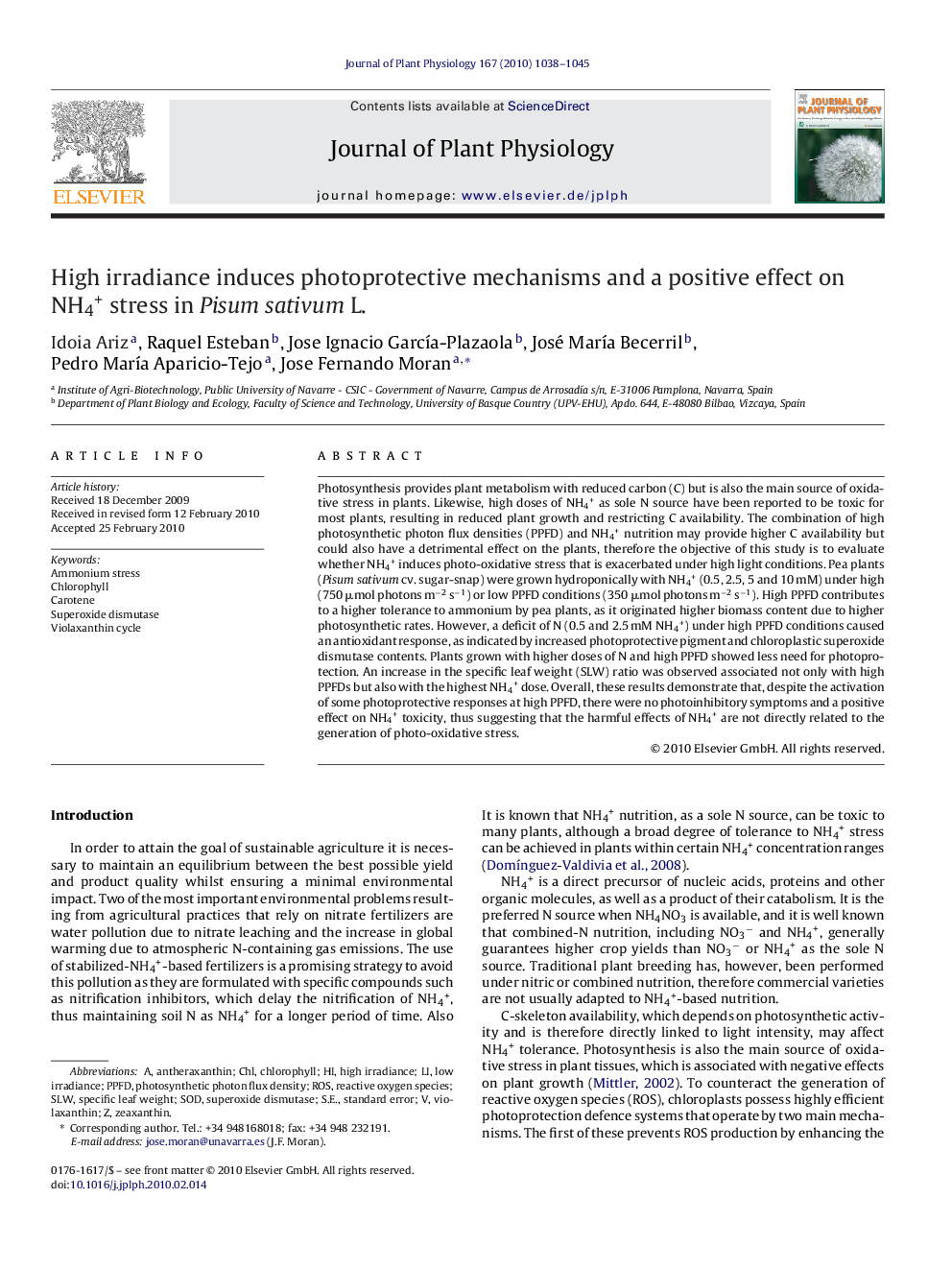| Article ID | Journal | Published Year | Pages | File Type |
|---|---|---|---|---|
| 2056773 | Journal of Plant Physiology | 2010 | 8 Pages |
Photosynthesis provides plant metabolism with reduced carbon (C) but is also the main source of oxidative stress in plants. Likewise, high doses of NH4+ as sole N source have been reported to be toxic for most plants, resulting in reduced plant growth and restricting C availability. The combination of high photosynthetic photon flux densities (PPFD) and NH4+ nutrition may provide higher C availability but could also have a detrimental effect on the plants, therefore the objective of this study is to evaluate whether NH4+ induces photo-oxidative stress that is exacerbated under high light conditions. Pea plants (Pisum sativum cv. sugar-snap) were grown hydroponically with NH4+ (0.5, 2.5, 5 and 10 mM) under high (750 μmol photons m−2 s−1) or low PPFD conditions (350 μmol photons m−2 s−1). High PPFD contributes to a higher tolerance to ammonium by pea plants, as it originated higher biomass content due to higher photosynthetic rates. However, a deficit of N (0.5 and 2.5 mM NH4+) under high PPFD conditions caused an antioxidant response, as indicated by increased photoprotective pigment and chloroplastic superoxide dismutase contents. Plants grown with higher doses of N and high PPFD showed less need for photoprotection. An increase in the specific leaf weight (SLW) ratio was observed associated not only with high PPFDs but also with the highest NH4+ dose. Overall, these results demonstrate that, despite the activation of some photoprotective responses at high PPFD, there were no photoinhibitory symptoms and a positive effect on NH4+ toxicity, thus suggesting that the harmful effects of NH4+ are not directly related to the generation of photo-oxidative stress.
